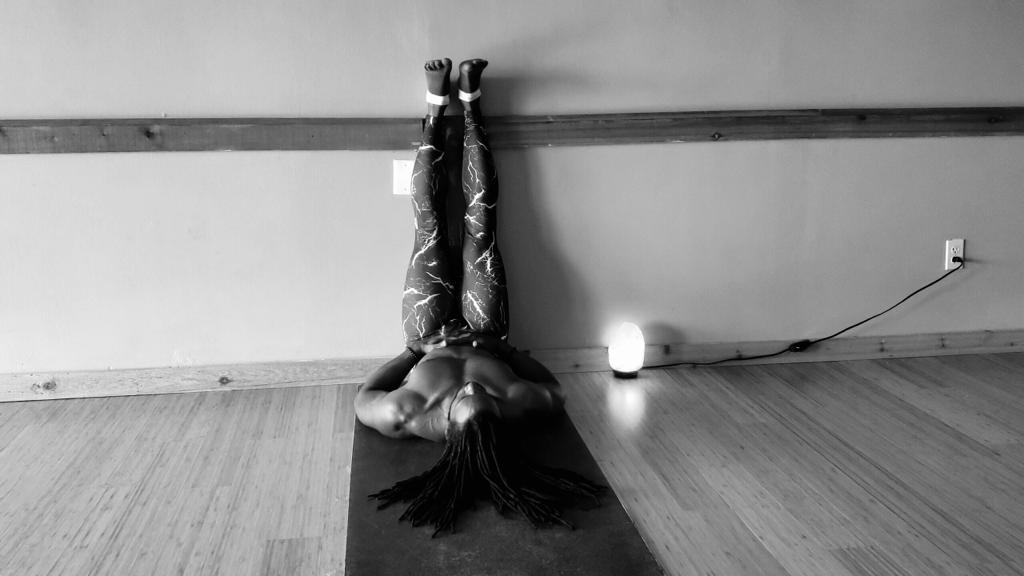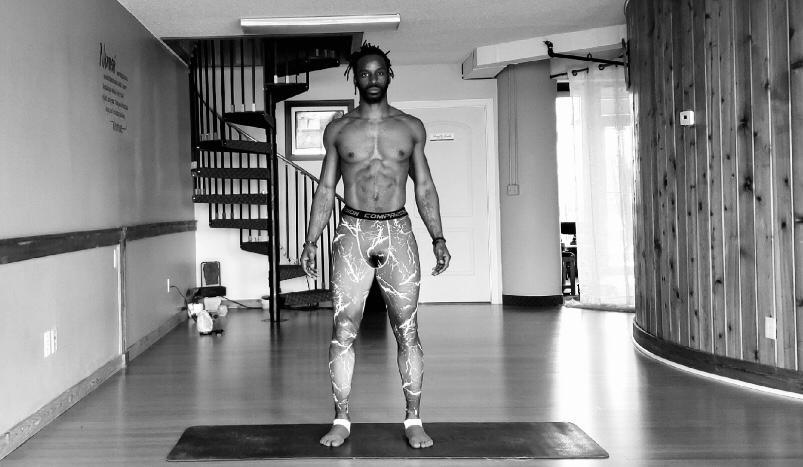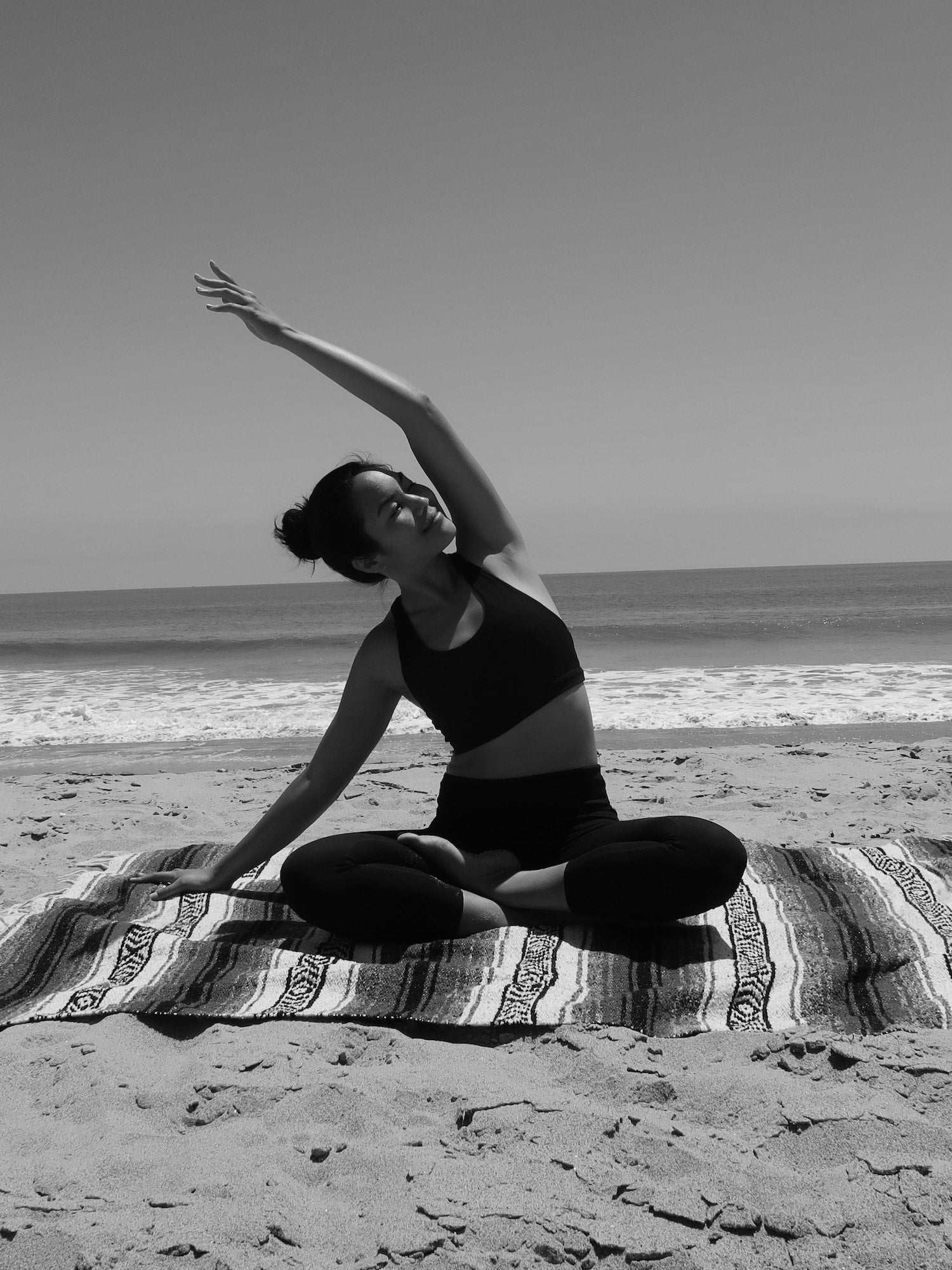
Viparita Karani: An Ayurvedic Guide to Legs Up the Wall Pose

Viparita Karani, commonly known as Legs Up the Wall pose is a simple, effective restorative yoga posture. Like all restorative postures, this pose places the body in a comfortable position so relaxation can occur. Restorative postures are typically held for an extended period of time so the practitioner has the space to rest, relax and renew.
Let’s take a look at some of the benefits of Viparita Karani:
- lowers blood pressure
- relieves insomnia
- eases fatigue
- calms the nervous system
- relaxes the muscles
- soothes tired legs
- improves circulation
- reduces stress
From the Ayurvedic perspective, this posture is best to calm both vata and pitta doshas; however, if you are predominantly kapha dosha, this posture is not out of the question.
Vata- For people that are vata predominant or experiencing a vata imbalance Viparita Karani is one of the best yoga postures to utilize to restore balance to the body and mind! We suggest staying in this posture for an extended period of time, anywhere from 20-30 minutes is ideal. Legs Up the Wall can help stabilize light, cold and mobile vata dosha and this, in turn, will calm the nervous system and ease any insomnia, anxiety, nervousness and fear. For extra grounding energy in Viparita Karani, we suggest covering yourself with a heavy blanket, using an eye pillow and even placing a Yoga sandbag across the pelvis (if you have one handy).
Pitta- For people that are pitta predominant or experiencing a pitta imbalance, Legs Up the Wall is a perfect reprieve from all the heated energy. We recommend staying in the posture for 10-20 minutes. Viparita Karani helps to soothe and cool the fiery aspects of pitta dosha and restore a sense of calm and center in the body and mind. Using an eye pillow for this posture is a marvelous way to balance pitta dosha as it helps to quiet the mind.
Kapha- For people experiencing excess kapha dosha, it is best to omit this posture during your yoga practice. This is because the heavy and stabilizing qualities of Viparita Karani can lead you into a state of further imbalance. However, if you are predominant in kapha dosha and feeling in balance, then this posture can most certainly be enjoyed! Our recommendation is to do Legs Up the Wall at the end of a strong kapha balancing yoga session and to limit your time to 5-10 minutes.
How to Do Viparita Karani:
- Start by sitting on the floor and place your right side body and shoulder against an empty wall, with your thighs parallel to the wall. Your legs should be bent with feet on the ground and drawn in towards your hips.
- To bring your legs up the wall, simultaneously lie flat on your back, turning towards the wall and gently swing your legs up the wall.
- It is imperative that your tailbone, low back and buttocks are not lifting up and away from the floor. If they are, scoot away from the wall slightly so you feel your entire back body supported by the floor.
- To keep the chin in a neutral position, you may want to place a folded blanket under your head to support your cervical spine (neck). (In general, having a blanket underneath your head feels lovely and we highly recommend it!).
- Keep the legs straight but completely relaxed.
- Keep the feet completely relaxed and in a neutral position.
- The hands can rest down at your sides or in a ‘T’ position, with the palms facing up or down.
- Allow the eyes to close. (If you have an eye pillow, you can use it here).
- Once you have physically gotten into the pose, begin to become aware of your breath.
- Take slow and steady abdominal breaths.
- Stay here for 5-30 minutes.
- To come out of the posture, slowly wiggle the fingers and toes and move the head gently side to side.
- Slide the legs down the wall and draw your knees into your chest.
- Move to the right side body and pause there in a fetal position.
- Slowly come to sit upright, still taking smooth and even breaths.
Precautions:
- It is best to learn any yoga posture, including Viparita Karani, under the supervision of a Yoga teacher. This way, the teacher can help correct alignment which will decrease the chances of you developing faulty or harmful habits in your Yoga practice.
- Please consult a physician before you begin any exercise practice, including Yoga.
Contraindications for Viparita Karani:
- If you have a hiatal hernia
- If you are menstruating
- If you are 3 months pregnant or at risk of miscarriage
- If you have sciatica





Leave a comment
This site is protected by hCaptcha and the hCaptcha Privacy Policy and Terms of Service apply.